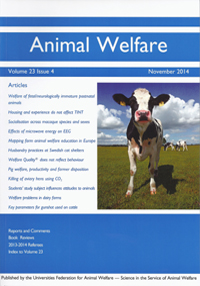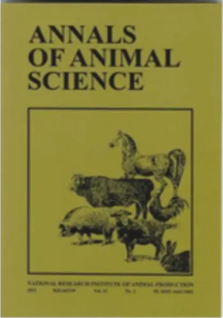Document type: online pre-publication of scientific article in Animal Welfare
Authors: R.M. Park, M.C. Cramer, B.K. Wagner, P. Turner, L.E. Moraes, A.V. Viscardi, J.F. Coetzee, M.D. Pairis-Garcia
Preview: Surgical castration is a painful procedure that is routinely performed without pain relief on commercial pig (Sus scrofa domesticus) farms. Previous research has focused on quantifying piglet pain response through behaviours. However, to date, behavioural sampling methodologies used to quantify pain associated with castration have not been validated. Therefore, the objective of this study was to validate scan sampling methodologies (2-min, 3-min, 5-min, 10-min and 15-min intervals) to quantify piglet pain responses expressed by castrated piglets behaviour. A total of 39 Yorkshire-Landrace × Duroc male piglets (five days of age) were surgically castrated using a scalpel blade. Behaviour frequency and duration (scratching, spasms, stiffness, tail wagging and trembling) of each piglet were continuously collected for the first 15 min of the following hours relative to castration (-24, 1-8 and 24). To determine if the sampling interval accurately reflected true duration and frequency for each behaviour, as determined by continuous observation, criteria previously utilised from other behavioural validation studies were used: coefficient of determination above 0.9, slope not statistically different from one and intercept not statistically different from zero. No scan sampling interval provided accurate estimates for any behavioural indicators of pain. The results of this study suggest that continuous sampling is the most appropriate methodology to fully capture behaviour specific to pain associated with castration. Using validated behavioural methodologies in future research can assist in the development of objective, science-based protocols for managing pig pain.





